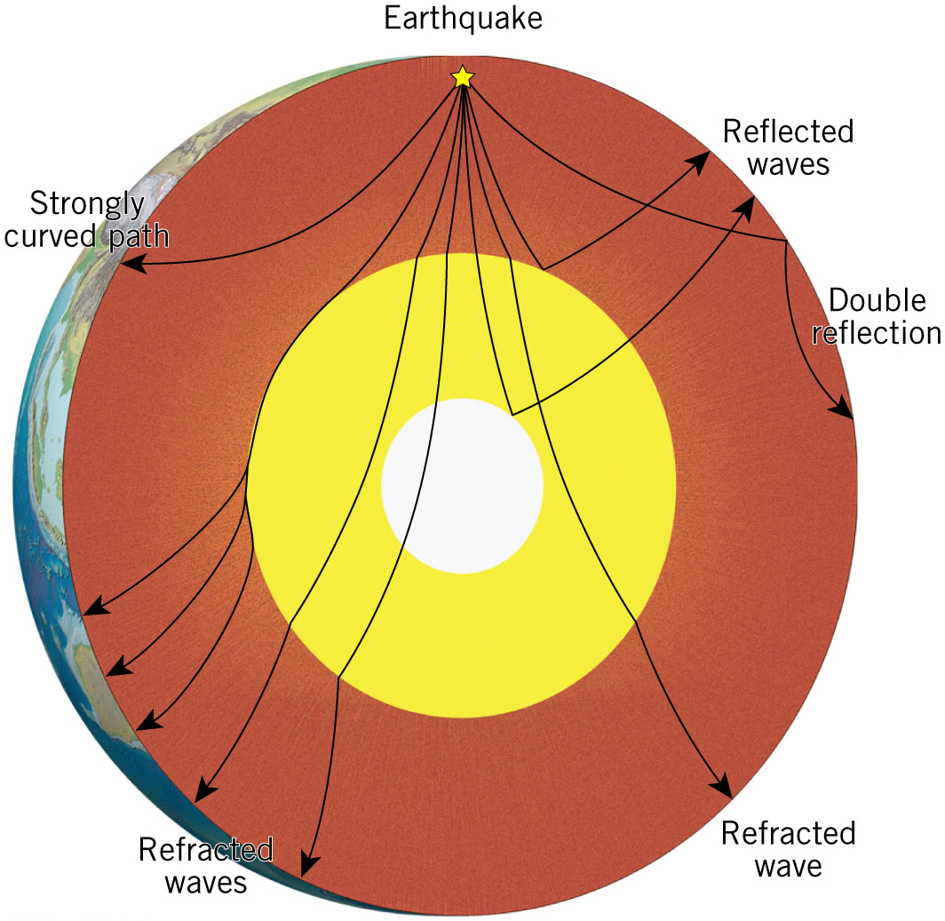 |
| Previous Image | Next Image |
| Description: Earth’s Interior Most of our knowledge of Earth’s interior comes from the study of P and S earthquake waves Travel times of P and S waves through Earth vary depending on the properties of the materials S waves travel only through solids Layers based on physical properties Crust Thin, rocky outer layer Varies in thickness Roughly 7 km (5 miles) in oceanic regions Continental crust averages 35–40 km (22–25 miles) Exceeds 70 km (40 miles) in some mountainous regions Layers based on physical properties Crust Continental crust Upper crust composed of granitic rocks Lower crust is more akin to basalt Average density is about 2.7 g/cm3 Up to 4 billion years old Layers based on physical properties Crust Oceanic Crust Basaltic composition Density about 3.0 g/cm3 Younger (180 million years or less) than the continental crust Layers based on physical properties Mantle Below crust to a depth of 2900 kilometers (1800 miles) Composition of the uppermost mantle is the igneous rock peridotite (changes at greater depths) Layers based on physical properties Outer Core Below mantle A sphere having a radius of 3486 km (2161 miles) Composed of an iron-nickel alloy Average density of nearly 11 g/cm3 Layers based on physical properties Lithosphere Crust and uppermost mantle (about 100 km thick) Cool, rigid, solid Asthenosphere Beneath the lithosphere Upper mantle To a depth of about 660 kilometers Soft, weak layer that is easily deformed Layers based on physical properties Mesosphere (or lower mantle) 660–2900 km More rigid layer Rocks are very hot and capable of gradual flow Outer core Liquid layer 2270 km (1410 miles) thick Convective flow of metallic iron within generates Earth’s magnetic field Layers based on physical properties Inner Core Sphere with a radius of 1216 km (754 miles) Behaves like a solid Picture Stats: Views: 237 Filesize: 1.19MB Height: 921 Width: 945 Source: https://biology-forums.com/index.php?action=gallery;sa=view;id=39568 |
